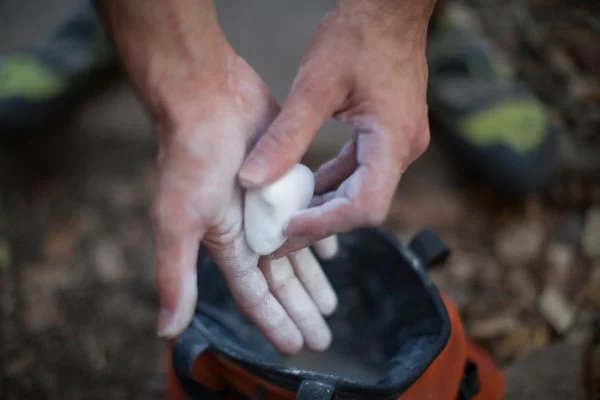If you’re a climber, then you’re probably familiar with chalk—that white powder that helps keep your hands dry while you climb. But what is it exactly? Does climbing chalk contain talc? Let’s take a closer look at this common question.
What Is Climbing Chalk?
Rock Climbing chalk is made from magnesium carbonate, an odorless and non-toxic mineral.
Climbers use it to absorb sweat from their hands while they climb; the drying effect of the chalk helps them maintain a better grip on the rocks or walls they are scaling.
Many brands of chalk are available, and some even offer different colors and scents so climbers can customize their experience.
Also Read: How Is Climbing Chalk Made?
Does Climbing Chalk Contain Talc?
The short answer is no. Most types of climbing chalk do not contain talc, although some do. Therefore, it’s essential to read the label carefully before purchasing any climbing chalk to make sure it does not contain talc or any other ingredients that could be potentially harmful if inhaled or ingested.
In general, it’s best to stick with natural climbing chalks like magnesium carbonate instead of synthetic ones that may contain chemicals or other dangerous ingredients.
In addition, natural chalks usually come in powdered form, making them easier to apply and less likely to cause skin irritation than many commercial chalks with added dyes or fragrances.
Also Read: Is Climbing Chalk Bad For The Environment?
Can Climbing Chalk Cause Rash?

The short answer is that chalk can cause skin rash in some people. In most cases, however, it’s not the chalk itself but rather an allergy to one or more ingredients that cause a reaction.
For example, some climbing chalks contain fragrances and dyes that can irritate sensitive skin or trigger allergies in those with pre-existing conditions such as eczema.
Reactions may range from mild itching to severe hives depending on the individual’s sensitivity levels and exposure time to the product.
Also Read: What Does Climbing Chalk Do?
The Causes of Climbing Chalk Rash
Chalk rashes are usually caused in one of two ways: Allergic Reactions or Prolonged Skin Contact. Those who have an allergy to magnesium carbonate will experience an allergic reaction when exposed to chalk dust. The reaction may manifest itself in the form of hives or itching and can be pretty uncomfortable for those affected by it.
On the other hand, prolonged contact with climbing chalk can also cause skin issues such as dryness and irritation. This type of issue isn’t an allergic reaction; it is simply a result of the skin being exposed to too much chalk over time.
This problem typically affects the hands but can occur anywhere on the body exposed to chalk repeatedly over an extended period.
Preventing Chalk Rash
If you want to avoid experiencing a rash from your climbing chalk, there are several steps you can take. First and foremost, make sure that you are using only high-quality chalk (not baking soda or anything else) specifically designed for use in rock climbing activities.
Keep your hands clean before applying more chalk; this will help reduce your risk of developing a rash due to prolonged contact with the powdery substance.
Finally, limit your exposure by using gloves whenever possible; this will help protect your hands from coming into contact with too much dirt and debris that could aggravate any existing rashes or skin irritations caused by the frequent use of climbing chalk.
Also Read: How Long Does Climbing Chalk Last?
Conclusion:
In conclusion, does climbing chalk contain talc? Well, most types of climbing chalk do not contain talc. However, it’s essential to read the label carefully before purchasing any climbing chalk to ensure it does not contain talc or other potentially harmful ingredients.
Natural chalks like magnesium carbonate are generally safer and more effective when applied correctly than synthetic ones with added dyes or fragrances. With the correct information and gear, climbers can safely enjoy their time outdoors without worrying about potential health risks from their equipment. Happy climbing!



